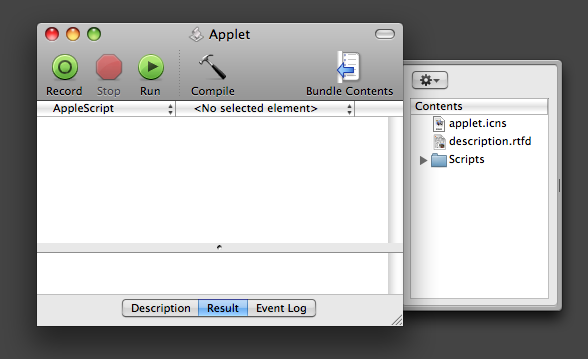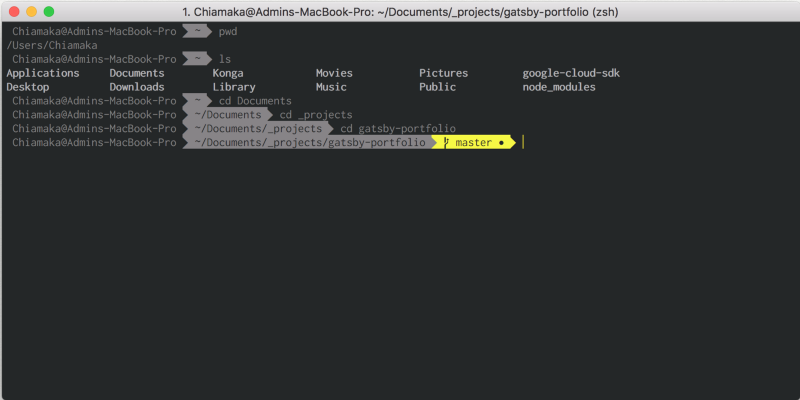Run Customize Mac OS
These advanced steps are primarily for system administrators and others who are familiar with the command line. You don't need a bootable installer to upgrade macOS or reinstall macOS, but it can be useful when you want to install on multiple computers without downloading the installer each time.
What you need to create a bootable installer
- A USB flash drive or other secondary volume formatted as Mac OS Extended, with at least 14GB of available storage
- A downloaded installer for macOS Big Sur, Catalina, Mojave, High Sierra, or El Capitan
Download macOS
- Download: macOS Big Sur, macOS Catalina, macOS Mojave, or macOS High Sierra
These download to your Applications folder as an app named Install macOS [version name]. If the installer opens after downloading, quit it without continuing installation. To get the correct installer, download from a Mac that is using macOS Sierra 10.12.5 or later, or El Capitan 10.11.6. Enterprise administrators, please download from Apple, not a locally hosted software-update server. - Download: OS X El Capitan
This downloads as a disk image named InstallMacOSX.dmg. On a Mac that is compatible with El Capitan, open the disk image and run the installer within, named InstallMacOSX.pkg. It installs an app named Install OS X El Capitan into your Applications folder. You will create the bootable installer from this app, not from the disk image or .pkg installer.
- The easiest way to change over your desktop image is to open up System Preferences (find it under the Apple menu), open the Desktop & Screensaver pane and select one of the designs on offer.
- Creating.zip archive files on our Macs is a handy way to enhance our file organization. Additionally, it's practically required when sharing or distributing one or more files. This article talks.
A 'C-program' is not supposed to be run. It is meant to be compiled into an 'executable' program which then can be run from your terminal. You need a compiler for that. Oh, and the answer to your last question ('Why?' ) is that the file you are trying to execute doesn't have the executable rights set (which a compiler usually does automatically with the binary, which let's infer that you were.

Use the 'createinstallmedia' command in Terminal
- Connect the USB flash drive or other volume that you're using for the bootable installer.
- Open Terminal, which is in the Utilities folder of your Applications folder.
- Type or paste one of the following commands in Terminal. These assume that the installer is in your Applications folder, and MyVolume is the name of the USB flash drive or other volume you're using. If it has a different name, replace
MyVolumein these commands with the name of your volume.
Big Sur:*
Catalina:*
Mojave:*
High Sierra:*
El Capitan:
* If your Mac is using macOS Sierra or earlier, include the --applicationpath argument and installer path, similar to the way this is done in the command for El Capitan.
After typing the command:
Run Mac Os In Windows
- Press Return to enter the command.
- When prompted, type your administrator password and press Return again. Terminal doesn't show any characters as you type your password.
- When prompted, type
Yto confirm that you want to erase the volume, then press Return. Terminal shows the progress as the volume is erased. - After the volume is erased, you may see an alert that Terminal would like to access files on a removable volume. Click OK to allow the copy to proceed.
- When Terminal says that it's done, the volume will have the same name as the installer you downloaded, such as Install macOS Big Sur. You can now quit Terminal and eject the volume.
Use the bootable installer
Determine whether you're using a Mac with Apple silicon, then follow the appropriate steps:
Apple silicon
- Plug the bootable installer into a Mac that is connected to the internet and compatible with the version of macOS you're installing.
- Turn on your Mac and continue to hold the power button until you see the startup options window, which shows your bootable volumes.
- Select the volume containing the bootable installer, then click Continue.
- When the macOS installer opens, follow the onscreen instructions.
Intel processor
- Plug the bootable installer into a Mac that is connected to the internet and compatible with the version of macOS you're installing.
- Press and hold the Option (Alt) ⌥ key immediately after turning on or restarting your Mac.
- Release the Option key when you see a dark screen showing your bootable volumes.
- Select the volume containing the bootable installer. Then click the up arrow or press Return.
If you can't start up from the bootable installer, make sure that the External Boot setting in Startup Security Utility is set to allow booting from external media. - Choose your language, if prompted.
- Select Install macOS (or Install OS X) from the Utilities window, then click Continue and follow the onscreen instructions.
Learn more
A bootable installer doesn't download macOS from the internet, but it does require an internet connection to get firmware and other information specific to the Mac model.
For information about the createinstallmedia command and the arguments you can use with it, make sure that the macOS installer is in your Applications folder, then enter the appropriate path in Terminal:
Can I Run Mac Os
Build a Custom Firefox Application for Mac OS X
Firefox is increasingly becoming the browser of choice among end-users. This poses a challenge for system administrators. Firefox does not use the standard plist preference system that is a part of Mac OS X. It uses its own proprietary method. This makes deploying and customizing Firefox in a managed setting different from most Mac OS X applications. Fortunately there are ways to make deploying Firefox easier. One way is to use tools to build a configured and locked-down version of Firefox ready for deployment in an enterprise setting.
Using freely available tools it is easy to build a customized version of Firefox for your organization. You can bundle settings customizations, certificates, extensions, and bookmarks into your custom Firefox build and pack it into a .dmg.
Before I get to the how-to, I want to briefly explain how this customization is actually working. What you are going to generate to customize your Firefox application is an extension file (.xpi). This extension file applies all of the settings of your choosing to Firefox when it is launched. This guide will walk you through generating the .xpi file, and then packaging Firefox with this custom .xpi into a .dmg that is ready to be deployed.

Tools you will need for this guide:
Install Firefox on your workstation then download and install the CCK Wizard Firefox plugin from here: https://addons.mozilla.org/en-US/firefox/addon/2553. Note: I wasn’t able to get this add-on to run on Firefox 3.6, I ran it on Firefox 3.5.7. This step only generates the .xpi file we are going to use in our custom build, and generating it with the CCK tool in 3.5.7 will still allow us to use the .xpi to deploy/customize Firefox 3.6.Turns out this doesn’t work. Will have to wait for the CCK Wizard to be compatible with 3.6. So for now this guide will only work for 3.5.7. CCK Wizard has now been updated and is compatible with Firefox 3.6.x.
Run the extension by going to the Tools menu in Firefox and select CCK Wizard. Run through the setup steps to configure your customizations (these steps are fairly self-explanatory). You can add bookmarks, extensions, etc. Once you are done the .xpi will be generated for you.
Now download and install the Firefox Release Repackager from here: http://benjamin.smedbergs.us/release-repackager/. You also need the Mac OS X developer tools installed to run the application.
I wasn’t able to get the GUI for the application to successfully run on 10.6, but luckily the application can be run from the command line and works like a charm.
Assuming you installed the Firefox Release Repackager to your applications folder, open Terminal and run the following command:
Run Customize Mac Os Download
Note: Despite how this appears below this should all be one line.
Here is a breakdown of the command:
Run the command as root (or use sudo) and you will have a custom dmg with your custom Firefox application. Awesome!